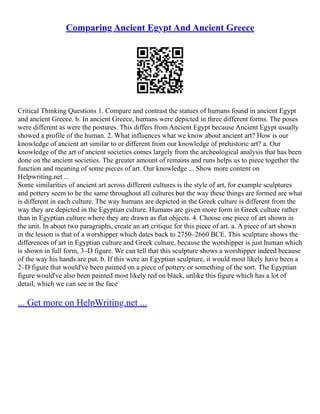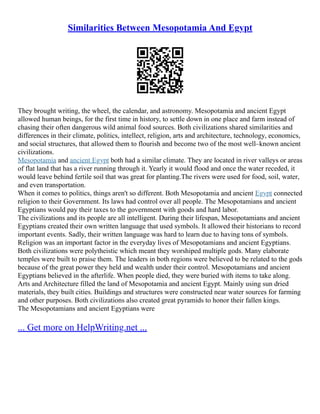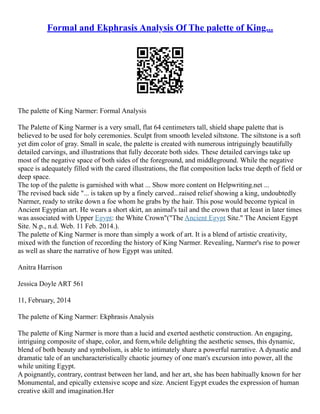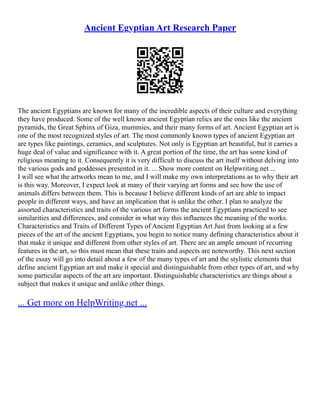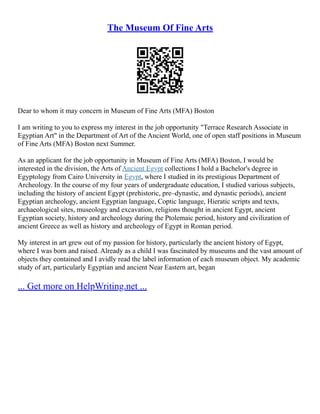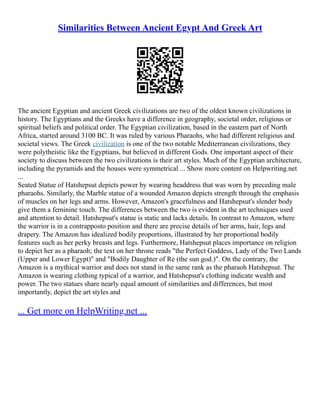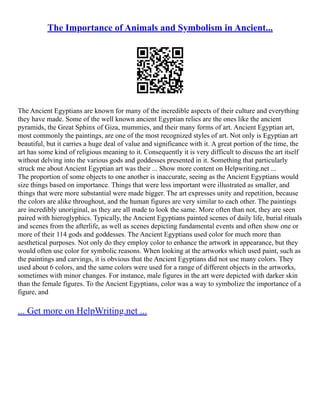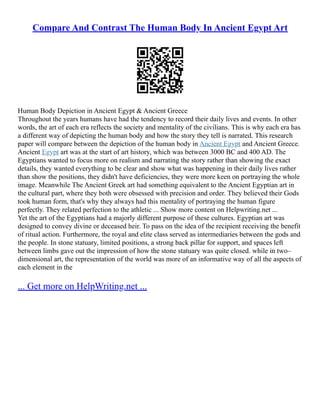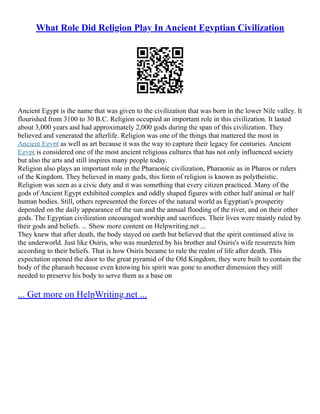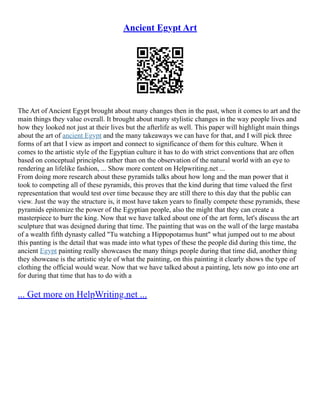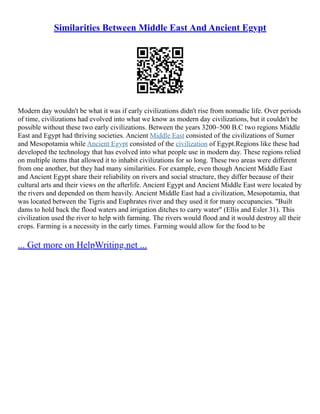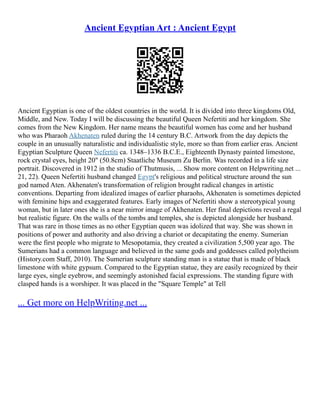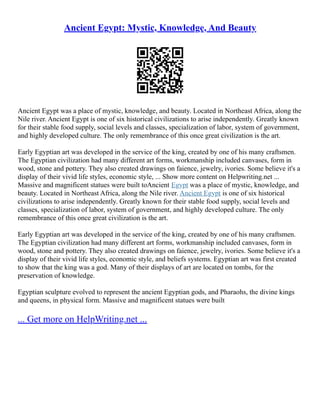Ancient Sudan (Nubia)
- 1. Ancient Sudan (Nubia) AFRS 2206 Section 001 Essay #2 Dr. Tanure Ojaide August 1, 2012 The Nubians Who are the Nubians? Nubians are people of northern Sudan and southern Egypt. Their history and traditions can be traced to the dawn of civilization. They settled first along the banks of the Nile from Aswan. Along the Nile, they developed one of the oldest and greatest civilizations in Africa until they lost their last kingdom five centuries ago. The Nubians remained as the main rivals to the homeland of Africa's earliest black culture with a history that can be traced from 3800 B.C. onward through the monuments and artifacts. Ancient Nubia was a land of great natural wealth, gold mines, ebony, ivory and incense that its neighbors always prized. Sudan had ... Show more content on Helpwriting.net ... The city of Napata gained its fame from the religious significance of Gebel Barkal. The Egyptians promoted the belief the primary form of their god dwelt inside the pure mountain Gebel Barkal. Egypt's sun–god Amun was represented as either a man with a ram head or as a crowned ram with a solar disk. It seems as though the Egyptians identified their pre–existing god from the land of Nubia as a local form of their own supreme god Amun who was considered to be the important source of the royal power of Egypt and Kush. The city of Meroe located on the east bank of the Nile, was the second urban center of the binary kingdoms of Kush. This city became the permanent royal residence of the Kushite Kings of Napata in the fifth century BC. Nubian pottery from the earliest periods represented the basic plastic material employed in Nubia and Egypt. Primitive drawings and engravings on Nubian pottery had a form identified of some geometric and symbolic patterns. These forms have been used on the surface of decorated pottery such as circles, squares, or triangles which represented the initial signs of most ancient civilizations. During the Neolithic period, people of this time covered their tools and pottery products with different forms, not particularly of art, but rather for recording their idea of life. Although these forms represent hidden symbols with no clear meaning, its purpose or goal was to help unleash the human mind while imagining its ... Get more on HelpWriting.net ...
- 5. How Did Ancient Egypt Life Influence Its Arts And... In summary, Egypt's abundant natural resources and benevolent climate greatly influenced its arts and architecture. The Nile, which its annual inundation, fertilized the arid fields and allowed the Egyptians to survive for over 3000 years. The river contributed to the development of agriculture, farming and the overall economic prosperity of the region. The Nile made possible the subsistence of trees, plants and animals, which thrived in the unique North African environment. Most importantly, the river valley landscape provided Egyptians with a plethora of resources such as stones, wood, minerals, metals and semi–precious stones. With those materials, the Egyptians were able to create aesthetic masterpieces to communicate their views and ideas. ... Get more on HelpWriting.net ...
- 9. Similarities Between Egypt And Mesopotamia Integrated Research Paper– Egypt and Mesopotamia Ancient Egypt and ancient Mesopotamia are both a part of the world's first civilizations, and these two civilizations have many similarities as well as differences. Ancient Egypt dates from 3100–310 B.C.E, and ancient Mesopotamia dates back to 3500 B.C.E all the way to 330 B.C.E. Mesopotamia was a civilization that had many civilizations within it, while ancient Egypt remained a uniform civilization that shared the same religious, political, cultural life for three thousand years (Fiero, 2015). According to Glenn Perry, "Egyptians' claim that their country–its capital city in particular– is the 'mother of the world' contains much truth if that means it is where history and civilization began" (Perry, 2016, p.56). Glenn Perry also states that there are many arguments on whether Egypt was the first civilization or whether Mesopotamia was the first civilization, but since there is very little documentation of the time period it is hard to know. According to Dr. Andrew Jamieson, "Ancient Mesopotamia, the land between the rivers Tigris and Euphrates, is one of the most historically significant and archaeologically rich regions in the world..." (Jamieson, 2015, p.23). One thing both authors agree on is that these two civilizations are important, because they mark the beginning of human history. These two civilizations are known for their advanced architecture, their different methods of art, and their gods and beliefs. These three ... Get more on HelpWriting.net ...
- 13. Ancient Egyptian Art : The Art Of Ancient Egypt The people of Ancient Egypt believed in the afterlife, and therefore it is no surprise that most of the art that survived from that time is connected to the dead–especially the popular figures such as the pharaohs. The early Egyptian paintings were very basic and were painted in rocks that portrayed everyday life objects. The pharaohs were like the gods of the earth which is why the Egyptians often represented the gods and the pharaohs with very similar features in some of the artwork. Even though most of the Egyptian art was found in tombs and, as mentioned before, had a solid connection with the afterlife, some of the artwork from Ancient Egypt also illustrated how family life was structured. According to the book The Art and ... Show more content on Helpwriting.net ... These palettes not only show how Egyptian civilization progressed, but also made it clear that the pharaoh, or ruler, will always triumph. As mentioned previously, the afterlife and the art of Egypt are strongly related. According to the book Ancient Egyptian Art, when a person passed away the Egyptians embalmed the body to preserve it. A painting on Djedbastinfanth's wooden coffin at El Hiba (600 BC) illustrates scenes where bodies are being prepared for burial. This painting supports the claim that art and the afterlife always go hand in hand. It was also an Egyptian custom to be buried with items that they thought would be needed for the afterlife. The Egyptians tended to make small sculptures, such as the Model of servants (c.1900 BC, clay) which were little servant statues that would be buried with their master/mistress so that they could serve him or her in the afterlife. However, the pharaoh would not be buried with plain statues like these; the pharaoh was buried with carved and painted sculptures of royal officials who would accompany him in the afterlife. These sculptures are a prime example that shows how the art and afterlife of Egypt are interconnected. Another example comes from the papyrus of Hunefer at Thebes (c.1320 BC, 116 in.). The scene illustrates priests and mourners at the entrance of Hunefer's tomb practicing burial rituals. After exploring some ... Get more on HelpWriting.net ...
- 17. Comparing Ancient Egypt And Ancient Greece Critical Thinking Questions 1. Compare and contrast the statues of humans found in ancient Egypt and ancient Greece. b. In ancient Greece, humans were depicted in three different forms. The poses were different as were the postures. This differs from Ancient Egypt because Ancient Egypt usually showed a profile of the human. 2. What influences what we know about ancient art? How is our knowledge of ancient art similar to or different from our knowledge of prehistoric art? a. Our knowledge of the art of ancient societies comes largely from the archeological analysis that has been done on the ancient societies. The greater amount of remains and runs helps us to piece together the function and meaning of some pieces of art. Our knowledge ... Show more content on Helpwriting.net ... Some similarities of ancient art across different cultures is the style of art, for example sculptures and pottery seem to be the same throughout all cultures but the way these things are formed are what is different in each culture. The way humans are depicted in the Greek culture is different from the way they are depicted in the Egyptian culture. Humans are given more form in Greek culture rather than in Egyptian culture where they are drawn as flat objects. 4. Choose one piece of art shown in the unit. In about two paragraphs, create an art critique for this piece of art. a. A piece of art shown in the lesson is that of a worshipper which dates back to 2750–2660 BCE. This sculpture shows the differences of art in Egyptian culture and Greek culture, because the worshipper is just human which is shown in full form, 3–D figure. We can tell that this sculpture shows a worshipper indeed because of the way his hands are put. b. If this were an Egyptian sculpture, it would most likely have been a 2–D figure that would've been painted on a piece of pottery or something of the sort. The Egyptian figure would've also been painted most likely red on black, unlike this figure which has a lot of detail, which we can see in the face ... Get more on HelpWriting.net ...
- 21. Similarities Between Mesopotamia And Egypt They brought writing, the wheel, the calendar, and astronomy. Mesopotamia and ancient Egypt allowed human beings, for the first time in history, to settle down in one place and farm instead of chasing their often dangerous wild animal food sources. Both civilizations shared similarities and differences in their climate, politics, intellect, religion, arts and architecture, technology, economics, and social structures, that allowed them to flourish and become two of the most well–known ancient civilizations. Mesopotamia and ancient Egypt both had a similar climate. They are located in river valleys or areas of flat land that has a river running through it. Yearly it would flood and once the water receded, it would leave behind fertile soil that was great for planting.The rivers were used for food, soil, water, and even transportation. When it comes to politics, things aren't so different. Both Mesopotamia and ancient Egypt connected religion to their Government. Its laws had control over all people. The Mesopotamians and ancient Egyptians would pay their taxes to the government with goods and hard labor. The civilizations and its people are all intelligent. During their lifespan, Mesopotamians and ancient Egyptians created their own written language that used symbols. It allowed their historians to record important events. Sadly, their written language was hard to learn due to having tons of symbols. Religion was an important factor in the everyday lives of Mesopotamians and ancient Egyptians. Both civilizations were polytheistic which meant they worshiped multiple gods. Many elaborate temples were built to praise them. The leaders in both regions were believed to be related to the gods because of the great power they held and wealth under their control. Mesopotamians and ancient Egyptians believed in the afterlife. When people died, they were buried with items to take along. Arts and Architecture filled the land of Mesopotamia and ancient Egypt. Mainly using sun dried materials, they built cities. Buildings and structures were constructed near water sources for farming and other purposes. Both civilizations also created great pyramids to honor their fallen kings. The Mesopotamians and ancient Egyptians were ... Get more on HelpWriting.net ...
- 25. Craftsmanship In Art The ancient sculptures, paintings, and arts are used to enhance a leader's image. The use of art started as a means of power at various times in diverse cultures. Paintings were created nearly during Stonehenge period. Very old Egyptian art refers to the accepted two dimensional and three– dimensional art developed in Egypt from 3000 BC and used until the 3rd century. Since the late nineteenth century, people have discovered that the ancient cultural groups and individuals have been composing a variety of arts, was all done on mass off caverns. Twenty–seven of the caves have been discovered so far, in the cliffs along the 17 miles of the Ardeche gorge. However, the give in found by Chauvet and his companions changed our reasoning about ancient people groups. Where beforehand found give in works of art had appeared to present day eye as virtuous, this gives in contained attracting like those a contemporary craftsman may have done. we can just guess that other practically identical craftsmanships were the item in ancient time, however, have not survived, maybe because they were made of wood or other perishable materials. It is even possible that craftsmanship may have been made sooner than 30,000 years prior, maybe as individuals started to possess the Close East, near 90,000 and 100,000 years back. At first, during the Paleolithic time, or "Old Stone Age", from the Greek palaios, "old", and lithos, "stone", the way of life of the world maintained themselves on diversion and ... Get more on HelpWriting.net ...
- 29. Explain The Three Column Styles Found In Ancient Greek Art 1. Describe two of the three column styles found in ancient Greek architecture. One column style is Ionic order. It originated in Eastern Greece, and had a more ornate column and capital than the Doric order. The columns rest on ornate, detailed bases and the fluted shaft is slender. There are 24 fluted grooves on the column, and has a large double scroll or volute as the capital. Another column style is Corinthian order. It grew from Ionic order, but is more ornate and elaborate. There are two rows of leaves that fan out from the capital and four scrolls. 2. What were Ushabti? What purpose did they have? Ushabti were small figurines that were placed in tombs to act as a substitute for the person in case he or she was called upon to do manual ... Show more content on Helpwriting.net ... Most sculptures are of common people or gods and goddesses. The cultures had architecture play a big part in their art. Both the Warka Vase from Sumerian art and The Narmer Palette from Egyptian art both tell a narrative. Unlike Egyptian and Greek architecture, Mesopotamian architecture is not able to be studied. The Mesopotamian architecture was worn away by time because of the poor building materials. Unlike Mesopotamian and Greek art, Egyptians did not make pottery. 4. Choose one piece of art shown in the unit. In about two paragraphs, create an art critique for this piece of art. The piece of art I choose is the sunk relief image of Pharaoh Akhenaten, Nefertiti, and their children. The image was made in Ancient Egypt, during Akhenaten's reign. It is a relief, so the background is carved away from the outlines to make them stand out. What attracts my attention in the image is how deep the lines are. It creates a strong contrast between them and the background. There is a lot of negative space in the piece that helps create the image and make it pop more. There are many curved lines in the picture to create movement and to better show the human ... Get more on HelpWriting.net ...
- 33. Ancient Egypt: Mystic, Knowledge, And Beauty Ancient Egypt was a place of mystic, knowledge, and beauty. Located in Northeast Africa, along the Nile river. Ancient Egypt is one of six historical civilizations to arise independently. Greatly known for their stable food supply, social levels and classes, specialization of labor, system of government, and highly developed culture. The only remembrance of this once great civilization is the art. Early Egyptian art was developed in the service of the king, created by one of his many craftsmen. The Egyptian civilization had many different art forms, workmanship included canvases, form in wood, stone and pottery. They also created drawings on faience, jewelry, ivories. Some believe it's a display of their vivid life styles, economic style, ... Show more content on Helpwriting.net ... Massive and magnificent statues were built toAncient Egypt was a place of mystic, knowledge, and beauty. Located in Northeast Africa, along the Nile river. Ancient Egypt is one of six historical civilizations to arise independently. Greatly known for their stable food supply, social levels and classes, specialization of labor, system of government, and highly developed culture. The only remembrance of this once great civilization is the art. Early Egyptian art was developed in the service of the king, created by one of his many craftsmen. The Egyptian civilization had many different art forms, workmanship included canvases, form in wood, stone and pottery. They also created drawings on faience, jewelry, ivories. Some believe it's a display of their vivid life styles, economic style, and beliefs systems. Egyptian art was first created to show that the king was a god. Many of their displays of art are located on tombs, for the preservation of knowledge. Egyptian sculpture evolved to represent the ancient Egyptian gods, and Pharaohs, the divine kings and queens, in physical form. Massive and magnificent statues were built ... Get more on HelpWriting.net ...
- 37. Formal and Ekphrasis Analysis Of The palette of King... The palette of King Narmer: Formal Analysis The Palette of King Narmer is a very small, flat 64 centimeters tall, shield shape palette that is believed to be used for holy ceremonies. Sculpt from smooth leveled siltstone. The siltstone is a soft yet dim color of gray. Small in scale, the palette is created with numerous intriguingly beautifully detailed carvings, and illustrations that fully decorate both sides. These detailed carvings take up most of the negative space of both sides of the foreground, and middleground. While the negative space is adequately filled with the cared illustrations, the flat composition lacks true depth of field or deep space. The top of the palette is garnished with what ... Show more content on Helpwriting.net ... The revised back side "... is taken up by a finely carved...raised relief showing a king, undoubtedly Narmer, ready to strike down a foe whom he grabs by the hair. This pose would become typical in Ancient Egyptian art. He wears a short skirt, an animal's tail and the crown that at least in later times was associated with Upper Egypt: the White Crown"("The Ancient Egypt Site." The Ancient Egypt Site. N.p., n.d. Web. 11 Feb. 2014.). The palette of King Narmer is more than simply a work of art. It is a blend of artistic creativity, mixed with the function of recording the history of King Narmer. Revealing, Narmer's rise to power as well as share the narrative of how Egypt was united. Anitra Harrison Jessica Doyle ART 561 11, February, 2014 The palette of King Narmer: Ekphrasis Analysis The palette of King Narmer is more than a lucid and exerted aesthetic construction. An engaging, intriguing composite of shape, color, and form,while delighting the aesthetic senses, this dynamic, blend of both beauty and symbolism, is able to intimately share a powerful narrative. A dynastic and dramatic tale of an uncharacteristically chaotic journey of one man's excursion into power, all the while uniting Egypt. A poignantly, contrary, contrast between her land, and her art, she has been habitually known for her Monumental, and epically extensive scope and size. Ancient Egypt exudes the expression of human creative skill and imagination.Her
- 38. ... Get more on HelpWriting.net ...
- 42. The Ancient Egyptian Style Of Ancient Egypt FNAR 200 Professor Heer 23 November 2015 KING NARMERS PALETTE The civilization of Ancient Egypt thrived from approximately 3100 bce until 30 bce, when the Roman Empire took control of the province. Unlike other ancient societies, however, where art would evolve and chance with new influences, the art of Ancient Egypt tends to look extremely similar for the entirety of those 300 years. The classical Egyptian style of art begins in the first dynasty, which is often considered to be ruled under King Narmer. The Narmer Palette (Fig. 1) is one of the most influential pieces of ancient Egyptian art for this very reason, as it portrays the joining of Upper and Lower Egypt into one solid empire that would continue to thrive for years to come at the fault of King Narmer. Unlike the art of prehistoric Egypt, dynastic art tends to focus on kingship and portraying the king as the sole ruler and most important figure in the civilization. Because of the powerful themes on both sides of the palette, the Narmer Palette has emerged as one of the most crucial pieces of artwork from early Egypt as it represents the joining of the prehistoric past of the civilization and the pharaonic dynasty that was beginning to emerge. King Narmer is considered by historians to be the first pharaoh of unified Egypt. It is suggested that during his rule, he was responsible for uniting the former Upper and Lower Egypt to form one strong central Egypt, of which he became king. His kingship initiated the ... Get more on HelpWriting.net ...
- 46. How Did The Nile River Affect Ancient Egypt The Nile River shaped the civilization of Ancient Egypt in many different and important ways, which includes agriculturally, geographically, and economically. It allowed them to grow crops in the harsh Sahara Desert. The Nile River determined where the Egyptians made their cities and settlements. It also allowed them to form a civilization with a booming economy when there was still wooly mammoths roaming the Earth. The Nile River was an essential in order for both ancient and modern Egypt to form in the ways that they did. The Nile River allowed the Ancient Egyptians to grow crops, like wheat and barley, in the harsh dry climate of the Sahara Desert. The Nile stretches all the way from the Mediterranean Sea 4,160 miles south. This ... Show more content on Helpwriting.net ... Although, these cities were not more than several miles away from the river itself. Also, the Nile provided the Egyptians with a great source of transportation. The image on Document C shows Egyptians transporting people and goods down the Nile for trade. In addition, the note on Document C says that the Nile flows from south to north, making it easier for Upper Egypt to reach Lower Egypt. This determined that goods would often come from Upper Egypt and go to Lower Egypt or other places in the North. According to Chapter 3a of our online textbook, the Nile also provided a source of food other than fertile soil for crops, which settled that Egyptians would have even more reason to settle around the Nile. Lastly, the Nile River allowed the Egyptians to form a booming economy with art, music, and religion. The Nile River provided Ancient Egypt with all of the basic necessities for life. For example, the Nile provided Ancient Egypt with fresh drinking water and fertile soil and fish for food. This allowed Egyptians to focus on other luxuries like the Pyramids or art and music. This then led to an economy forming with a social structure. Moreover, in Document B, once Akhet and Peret passed, Shemu, harvest season, came and allowed the Egyptians to harvest the crops they planted during Peret and were able to take them to the market to be sold. This added to the booming economy being formed in Egypt due to the Nile providing the basic ... Get more on HelpWriting.net ...
- 50. Ancient Egyptian Art Research Paper The ancient Egyptians are known for many of the incredible aspects of their culture and everything they have produced. Some of the well known ancient Egyptian relics are the ones like the ancient pyramids, the Great Sphinx of Giza, mummies, and their many forms of art. Ancient Egyptian art is one of the most recognized styles of art. The most commonly known types of ancient Egyptian art are types like paintings, ceramics, and sculptures. Not only is Egyptian art beautiful, but it carries a huge deal of value and significance with it. A great portion of the time, the art has some kind of religious meaning to it. Consequently it is very difficult to discuss the art itself without delving into the various gods and goddesses presented in it. ... Show more content on Helpwriting.net ... I will see what the artworks mean to me, and I will make my own interpretations as to why their art is this way. Moreover, I expect look at many of their varying art forms and see how the use of animals differs between them. This is because I believe different kinds of art are able to impact people in different ways, and have an implication that is unlike the other. I plan to analyze the assorted characteristics and traits of the various art forms the ancient Egyptians practiced to see similarities and differences, and consider in what way this influences the meaning of the works. Characteristics and Traits of Different Types of Ancient Egyptian Art Just from looking at a few pieces of the art of the ancient Egyptians, you begin to notice many defining characteristics about it that make it unique and different from other styles of art. There are an ample amount of recurring features in the art, so this must mean that these traits and aspects are noteworthy. This next section of the essay will go into detail about a few of the many types of art and the stylistic elements that define ancient Egyptian art and make it special and distinguishable from other types of art, and why some particular aspects of the art are important. Distinguishable characteristics are things about a subject that makes it unique and unlike other things. ... Get more on HelpWriting.net ...
- 54. The Museum Of Fine Arts Dear to whom it may concern in Museum of Fine Arts (MFA) Boston I am writing to you to express my interest in the job opportunity "Terrace Research Associate in Egyptian Art" in the Department of Art of the Ancient World, one of open staff positions in Museum of Fine Arts (MFA) Boston next Summer. As an applicant for the job opportunity in Museum of Fine Arts (MFA) Boston, I would be interested in the division, the Arts of Ancient Egypt collections I hold a Bachelor's degree in Egyptology from Cairo University in Egypt, where I studied in its prestigious Department of Archeology. In the course of my four years of undergraduate education, I studied various subjects, including the history of ancient Egypt (prehistoric, pre–dynastic, and dynastic periods), ancient Egyptian archeology, ancient Egyptian language, Coptic language, Hieratic scripts and texts, archaeological sites, museology and excavation, religions thought in ancient Egypt, ancient Egyptian society, history and archeology during the Ptolemaic period, history and civilization of ancient Greece as well as history and archeology of Egypt in Roman period. My interest in art grew out of my passion for history, particularly the ancient history of Egypt, where I was born and raised. Already as a child I was fascinated by museums and the vast amount of objects they contained and I avidly read the label information of each museum object. My academic study of art, particularly Egyptian and ancient Near Eastern art, began ... Get more on HelpWriting.net ...
- 58. Ancient Egyptian Art And Contribution To Late Mesolithic Art There are many different art styles around the world that developed in various ways. Ancient Egyptian art is around 5 thousand years old, and it is a major contributor to late Mesolithic Art. It arose and took shape in the civilization of the Nile Valley. Ancient Egyptian art reached a high level in painting and sculpture, and was both extremely stylized and symbolic. Most of the Egyptian sculptures that have been well–preserved were initially made for temples and/or tombs. Egyptian sculpture and all Egyptian art was based on the belief in a life after death. The body of the pharaoh was carefully preserved, and certain goods were buried with him in the Pyramids of Giza to provide for his needs forever. Life–size and even much larger statues, carved in slate, alabaster, and limestone, were as regular and simple in shape as the tombs themselves. These statues were replicas of the rulers, the nobles, and the gods worshiped by the Egyptians, and were put in temples and burial chambers. Scenes engraved and painted in the tombs or on temple walls literally described Egyptian life. Eleanor Barton, in The History of Sculpture, states, "The Egyptians often combined features from various creatures to symbolize ideas. For example, the human head of the pharaoh Khafre is added to the crouching figure of a lion to form the Great Sphinx. This composition suggests the combination of human intelligence and animal strength." Egyptian sculptors always presented clear ideas. The pharaoh or ... Get more on HelpWriting.net ...
- 62. Similarities Between Ancient Egypt And Greek Art The ancient Egyptian and ancient Greek civilizations are two of the oldest known civilizations in history. The Egyptians and the Greeks have a difference in geography, societal order, religious or spiritual beliefs and political order. The Egyptian civilization, based in the eastern part of North Africa, started around 3100 BC. It was ruled by various Pharaohs, who had different religious and societal views. The Greek civilization is one of the two notable Mediterranean civilizations, they were polytheistic like the Egyptians, but believed in different Gods. One important aspect of their society to discuss between the two civilizations is their art styles. Much of the Egyptian architecture, including the pyramids and the houses were symmetrical ... Show more content on Helpwriting.net ... Seated Statue of Hatshepsut depicts power by wearing headdress that was worn by preceding male pharaohs. Similarly, the Marble statue of a wounded Amazon depicts strength through the emphasis of muscles on her legs and arms. However, Amazon's gracefulness and Hatshepsut's slender body give them a feminine touch. The differences between the two is evident in the art techniques used and attention to detail. Hatshepsut's statue is static and lacks details. In contrast to Amazon, where the warrior is in a contrapposto position and there are precise details of her arms, hair, legs and drapery. The Amazon has idealized bodily proportions, illustrated by her proportional bodily features such as her perky breasts and legs. Furthermore, Hatshepsut places importance on religion to depict her as a pharaoh; the text on her throne reads "the Perfect Goddess, Lady of the Two Lands (Upper and Lower Egypt)" and "Bodily Daughter of Re (the sun god.)". On the contrary, the Amazon is a mythical warrior and does not stand in the same rank as the pharaoh Hatshepsut. The Amazon is wearing clothing typical of a warrior, and Hatshepsut's clothing indicate wealth and power. The two statues share nearly equal amount of similarities and differences, but most importantly, depict the art styles and ... Get more on HelpWriting.net ...
- 66. Amenhotep's Religious Revolution Amenhotep IV's reign is one of the most impactful and revolutionary of ancient Egypt, coming to be known as the religious revolution. The changes and traditions that were implemented during his reign greatly affected the reign's after his own. While in the past, ancient Egypt had been a polytheistic religious culture. However, during the reign of Amenhotep IV the status quo changed for ancient Egypt leaving behind long–lasting affects to the religion, culture, and society in ancient Egypt. In past Pharaoh's reigns, the polytheistic religion remained prominent. However, Amenhotep IV's childhood sparked a new perspective about ancient Egypt's main religion. Unlike other Pharaoh's before him, Akhenaten desired to finish what his father started ... Show more content on Helpwriting.net ... Becoming known as the Armana period, Amenhotep's reign revolutionized artwork as a whole. In past reigns self–monuments have depicted the realistic side of the Pharaoh. For example, Akhenaten was often pictured with an elongated jaw line, wide hips, and a round belly. This image was a drastic transformation from past ancient Egyptian art forms. Prior to the Armana period, art was very unrealistic. For example, the past depictions of Pharaoh's were as muscular, clear cut and proportional. Amenhotep IV changed art to accurately portray the Pharaoh rather than creating an impractical version. The Armana art had a sense of realism that ancient Egyptian art had not had prior to artists in the Middle Kingdom. For instance, the remarkable stele of Akhenaten which displays the royal family emphasizes the rays of the god Aten touching each of them. This stele is one of the many during the Armana period that shows the sense of realism that the Armana period was built upon. The image of the rays physically touching each of the family members depicts how the god Aten is with them and is shining his power and protection over each of ... Get more on HelpWriting.net ...
- 70. Ancient Egypt Religion Organized Religion, Exquisite Art, and a structured Government demonstrate that Ancient Egypt was a highly advanced culture. Religion in ancient Egypt was both organized and successful in ways of life and ceremonial occasions. Egyptian art was detailed, exquisite and represented how much art showed and was cared for. Government in Ancient Egypt depended on rulers and the form of democracy. Ancient Egyptian religion had an effective impact on their daily life. The afterlife preparation and ceremonies was very important to the Ancient Egyptians. The afterlife took work and care but was cared for deeply by all Egyptian people. In ancient Egypt both royal men and women wore makeup in ways of their religion. Makeup in Ancient Egypt played a part in religion, makeup and cosmetics were very important because for the Royal it showed power and true dedication. Makeup was made of all natural materials and objects.They used resources that they had to make the best out of everyday life. Religion was not only for the people but also for the ... Show more content on Helpwriting.net ... Ancient Egyptian art explained plans and showed how processes of daily life in Egypt were important. Daily life in Egypt was complicated but the art showed a process for orders and plans. The placement of art in Ancient Egypt is significant, because of the meaning behind the arts culture. Culture in Egypt was effected by art, art was not only used for daily life but for sculptures, afterlife, architecture, and ceremonies or festivals artistic events. The technology Ancient Egyptians used to create their art was a highly advanced system. Technology is not only modern devices but also ancient ways of life. The technology was apart of daily life, the Egyptian had to use what they were provided with by nature to create all of their successful pieces of technology. Art was important to many people of ancient Egypt and still is presented ... Get more on HelpWriting.net ...
- 74. The Importance of Animals and Symbolism in Ancient... The Ancient Egyptians are known for many of the incredible aspects of their culture and everything they have made. Some of the well known ancient Egyptian relics are the ones like the ancient pyramids, the Great Sphinx of Giza, mummies, and their many forms of art. Ancient Egyptian art, most commonly the paintings, are one of the most recognized styles of art. Not only is Egyptian art beautiful, but it carries a huge deal of value and significance with it. A great portion of the time, the art has some kind of religious meaning to it. Consequently it is very difficult to discuss the art itself without delving into the various gods and goddesses presented in it. Something that particularly struck me about Ancient Egyptian art was their ... Show more content on Helpwriting.net ... The proportion of some objects to one another is inaccurate, seeing as the Ancient Egyptians would size things based on importance. Things that were less important were illustrated as smaller, and things that were more substantial were made bigger. The art expresses unity and repetition, because the colors are alike throughout, and the human figures are very similar to each other. The paintings are incredibly unoriginal, as they are all made to look the same. More often than not, they are seen paired with hieroglyphics. Typically, the Ancient Egyptians painted scenes of daily life, burial rituals and scenes from the afterlife, as well as scenes depicting fundamental events and often show one or more of their 114 gods and goddesses. The Ancient Egyptians used color for much more than aesthetical purposes. Not only do they employ color to enhance the artwork in appearance, but they would often use color for symbolic reasons. When looking at the artworks which used paint, such as the paintings and carvings, it is obvious that the Ancient Egyptians did not use many colors. They used about 6 colors, and the same colors were used for a range of different objects in the artworks, sometimes with minor changes. For instance, male figures in the art were depicted with darker skin than the female figures. To the Ancient Egyptians, color was a way to symbolize the importance of a figure, and ... Get more on HelpWriting.net ...
- 78. Mesopotamia And Egypt Similarities Looking at the cultures, Mesopotamian and Egyptian, you can see the similarities and differences throughout their history. Ancient Mesopotamian began to form in terms of religious customs, artwork, architecture, and literature. Ancient Egypt culture was one of longest–lasting and dominant cultures of its time. This culture is known for its amazing practices in a variety of different fields including art, architecture, and other practices. These two civilizations became interlinked with one another influencing each other by their arts and teachings, however they personalized it to suit their own cultures and therefore there are also many differences between the Mesopotamian and Egyptian. In the Ancient Mesopotamian culture you see all of the different aspects of culture throughout its time ... Show more content on Helpwriting.net ... In Egypt, the government was more authoritative and strict like our government today is on its people where as the Mesopotamians had more of a stress on the place as a city or state would. Differences are also evident in building structures because Mesopotamian art was more simplistic than Egyptian. Egypt excelled in art because it was extremely intricate. Mesopotamia also and contained a stronger literature than the Egyptian culture did. Each culture achieved great art, literature, architecture, and religious customs though their methods and style differ. In terms of similarities, Mesopotamia and Egypt both did everything to show their devotion and service to a higher power. Art was not only a difference but also a commonality. Both used clay art to represent their own cultures. Clay artwork was used to express their interpretations of God. Religion was also a big factor in both cultures and they were both Polytheistic meaning they believed in many Gods. Even literature was used to teach, express, and expand religion. Architecture was formed to honor their own Gods as ... Get more on HelpWriting.net ...
- 82. Compare And Contrast The Human Body In Ancient Egypt Art Human Body Depiction in Ancient Egypt & Ancient Greece Throughout the years humans have had the tendency to record their daily lives and events. In other words, the art of each era reflects the society and mentality of the civilians. This is why each era has a different way of depicting the human body and how the story they tell is narrated. This research paper will compare between the depiction of the human body in Ancient Egypt and Ancient Greece. Ancient Egypt art was at the start of art history, which was between 3000 BC and 400 AD. The Egyptians wanted to focus more on realism and narrating the story rather than showing the exact details, they wanted everything to be clear and show what was happening in their daily lives rather than show the positions, they didn't have deficiencies, they were more keen on portraying the whole image. Meanwhile The Ancient Greek art had something equivalent to the Ancient Egyptian art in the cultural part, where they both were obsessed with precision and order. They believed their Gods took human form, that's why they always had this mentality of portraying the human figure perfectly. They related perfection to the athletic ... Show more content on Helpwriting.net ... Yet the art of the Egyptians had a majorly different purpose of these cultures. Egyptian art was designed to convey divine or deceased heir. To pass on the idea of the recipient receiving the benefit of ritual action. Furthermore, the royal and elite class served as intermediaries between the gods and the people. In stone statuary, limited positions, a strong back pillar for support, and spaces left between limbs gave out the impression of how the stone statuary was quite closed. while in two– dimensional art, the representation of the world was more of an informative way of all the aspects of each element in the ... Get more on HelpWriting.net ...
- 86. What Role Did Religion Play In Ancient Egyptian Civilization Ancient Egypt is the name that was given to the civilization that was born in the lower Nile valley. It flourished from 3100 to 30 B.C. Religion occupied an important role in this civilization. It lasted about 3,000 years and had approximately 2,000 gods during the span of this civilization. They believed and venerated the afterlife. Religion was one of the things that mattered the most in Ancient Egypt as well as art because it was the way to capture their legacy for centuries. Ancient Egypt is considered one of the most ancient religious cultures that has not only influenced society but also the arts and still inspires many people today. Religion also plays an important role in the Pharaonic civilization, Pharaonic as in Pharos or rulers of the Kingdom. They believed in many gods, this form of religion is known as polytheistic. Religion was seen as a civic duty and it was something that every citizen practiced. Many of the gods of Ancient Egypt exhibited complex and oddly shaped figures with either half animal or half human bodies. Still, others represented the forces of the natural world as Egyptian's prosperity depended on the daily appearance of the sun and the annual flooding of the river, and on their other gods. The Egyptian civilization encouraged worship and sacrifices. Their lives were mainly ruled by their gods and beliefs. ... Show more content on Helpwriting.net ... They knew that after death, the body stayed on earth but believed that the spirit continued alive in the underworld. Just like Osiris, who was murdered by his brother and Osiris's wife resurrects him according to their beliefs. That is how Osiris became to rule the realm of life after death. This expectation opened the door to the great pyramid of the Old Kingdom, they were built to contain the body of the pharaoh because even knowing his spirit was gone to another dimension they still needed to preserve his body to serve them as a base on ... Get more on HelpWriting.net ...
- 90. Essay about Ancient Egypt and Ancient Greece "Ancient Egypt and Ancient Greece" According to history there existed two of many important ancient civilizations that left a significant mark in the history of human development that even today leaves modern society in awe of its greatness. In spite of being distant civilizations, Ancient Egypt and Ancient Greece share similarities and difference in terms of how they practiced religion,political structure, everyday life style, and how they built the monumental architectures that continued to amaze the modern world of today. These comparison and contrast explain their difference in history and their dynasty's long term success. Through the early developmental age these two ancient civilizations contrasted in many ways perhaps due to ... Show more content on Helpwriting.net ... Ancient Egypt and Ancient Greece both believed in life after death, though the process in which they follow that belief differ greatly. The Greeks believed that at the moment of death the spirit leaves the body in the form of a little gust of wind or a puff of breath. The Greeks believed in proper burial rights that were performed in three parts, and the relatives mostly women are the ones that conduct these rituals for the deceased. Much like the modern world these rituals consist of the first step; laying out the body to be dressed, the second funeral procession, and the third step was the cremation of the body. Unlike the Greeks the Egyptians developed a process in which they prepared and preserved the dead for the afterlife, known as mummification. This process is believed to have been the purpose of the Egyptians famous pyramids, believed to be the stairs that would lead the Pharaohs to their kingdom in the afterlife. Artifacts are buried in their tombs such as gold, wine, and sculptures to accompany the dead in life after death. As widely admired civilizations both Ancient Egypt and ancient Greece prospered for many years, and is due to its political governing. In ancient Egypt the Pharaoh was perceived to be the embodiment of the all mighty sun god, and regarded him as a god himself. Therefore the Pharaoh was the ruler of all of Egypt and citizens did not have a say in politics. Egyptian class structure is best portrayed by ... Get more on HelpWriting.net ...
- 94. Ancient Egypt Art The Art of Ancient Egypt brought about many changes then in the past, when it comes to art and the main things they value overall. It brought about many stylistic changes in the way people lives and how they looked not just at their lives but the afterlife as well. This paper will highlight main things about the art of ancient Egypt and the many takeaways we can have for that, and I will pick three forms of art that I view as import and connect to significance of them for this culture. When it comes to the artistic style of the Egyptian culture it has to do with strict conventions that are often based on conceptual principles rather than on the observation of the natural world with an eye to rendering an lifelike fashion, ... Show more content on Helpwriting.net ... From doing more research about these pyramids talks about how long and the man power that it took to competing all of these pyramids, this proves that the kind during that time valued the first representation that would test over time because they are still there to this day that the public can view. Just the way the structure is, it most have taken years to finally compete these pyramids, these pyramids epitomize the power of the Egyptian people, also the might that they can create a masterpiece to burr the king. Now that we have talked about one of the art form, let's discuss the art sculpture that was designed during that time. The painting that was on the wall of the large mastaba of a wealth fifth dynasty called "Tu watching a Hippopotamus hunt" what jumped out to me about this panting is the detail that was made into what types of these the people did during this time, the ancient Egypt painting really showcases the many things people during that time did, another thing they showcase is the artistic style of what the painting, on this painting it clearly shows the type of clothing the official would wear. Now that we have talked about a painting, lets now go into one art for during that time that has to do with a ... Get more on HelpWriting.net ...
- 98. Similarities Between Middle East And Ancient Egypt Modern day wouldn't be what it was if early civilizations didn't rise from nomadic life. Over periods of time, civilizations had evolved into what we know as modern day civilizations, but it couldn't be possible without these two early civilizations. Between the years 3200–500 B.C two regions Middle East and Egypt had thriving societies. Ancient Middle East consisted of the civilizations of Sumer and Mesopotamia while Ancient Egypt consisted of the civilization of Egypt.Regions like these had developed the technology that has evolved into what people use in modern day. These regions relied on multiple items that allowed it to inhabit civilizations for so long. These two areas were different from one another, but they had many similarities. For example, even though Ancient Middle East and Ancient Egypt share their reliability on rivers and social structure, they differ because of their cultural arts and their views on the afterlife. Ancient Egypt and Ancient Middle East were located by the rivers and depended on them heavily. Ancient Middle East had a civilization, Mesopotamia, that was located between the Tigris and Euphrates river and they used it for many occupancies. "Built dams to hold back the flood waters and irrigation ditches to carry water" (Ellis and Esler 31). This civilization used the river to help with farming. The rivers would flood and it would destroy all their crops. Farming is a necessity in the early times. Farming would allow for the food to be ... Get more on HelpWriting.net ...
- 102. Similarities And Differences Between Ancient Egypt And... The introduction of writing, the wheel, the calendar, and astronomy. Mesopotamia and ancient Egypt allowed human beings, for the first time in history, to settle down in one place and farm instead of chasing their often dangerous wild animal food sources. Both civilizations shared similarities and differences in their climate, politics, intellect, religion, arts and architecture, technology, economics, and social structures, that allowed them to flourish and become two of the most well–known ancient civilizations. Mesopotamia and ancient Egypt, both had a similar climate. Located in river valleys or areas of flat land that has a river running through it. Yearly it would flood and once the water receded, it would leave behind fertile soil that was great for planting.The rivers provided food, soil, water, and even transportation. When it comes to politics, things aren't so different. Both Mesopotamia and ancient Egypt connected religion to their Government. Its laws had control over all people. The Mesopotamians and ancient Egyptians would pay their taxes to the government with goods and hard labor. The civilizations and its people are all intelligent. During their lifespan, Mesopotamians and ancient Egyptians created their own written language that used symbols. It allowed their historians to record important events. Sadly, their written language was hard to learn due to having tons of symbols. Religion was an important factor in the everyday lives of the Mesopotamians and ... Get more on HelpWriting.net ...
- 106. Ancient Egypt Art Analysis Ancient Egypt is said to have provided the building blocks for Roman and Greek culture, and influenced the western tradition. After the collapse of the Old Kingdom in 2150 B.C.E Nebhepetre Mentuhotep II, first ruler of the Middle Kingdom, reunited upper and lower Egypt marking the start of the Middle Kingdom. The Middle Kingdom was another high point in ancient Egyptian history for many reasons. Egyptian art and writing, culture, religious and political traditions were restored. During the twelve dynasty, art and writing had prospered and rulers prolonged and fortified their borders. But it was toward the end of the Middle Kingdom during the thirteenth dynasty where political power was weakening due to short–lived kings and the arrival of immigrants. The University of Pennsylvania Museum of Archaeology and Anthropology comprises of many galleries. One collection they have the privilege to showcase is The Granite Sphinx of Ramses II. Through Ancient Egypt's Sphinx exhibit the interior design and arrangement of art influenced my own understanding of the art work from the Middle Kingdom as well as expanding off of the information I previously learned. As I entered into the Egypt (Sphinx) Gallery, I had to adjust from a brightly lit common area to a dimly lit gallery room. The interior design comprised of earth tone painted walls with a gold tint. An important note to state is there were no windows producing natural light; the exhibit is dimly lit with an array of spot lights ... Get more on HelpWriting.net ...
- 110. Ancient Egyptian Art : Ancient Egypt Ancient Egyptian is one of the oldest countries in the world. It is divided into three kingdoms Old, Middle, and New. Today I will be discussing the beautiful Queen Nefertiti and her kingdom. She comes from the New Kingdom. Her name means the beautiful women has come and her husband who was Pharaoh Akhenaten ruled during the 14 century B.C. Artwork from the day depicts the couple in an unusually naturalistic and individualistic style, more so than from earlier eras. Ancient Egyptian Sculpture Queen Nefertiti ca. 1348–1336 B.C.E., Eighteenth Dynasty painted limestone, rock crystal eyes, height 20" (50.8cm) Staatliche Museum Zu Berlin. Was recorded in a life size portrait. Discovered in 1912 in the studio of Thutmusis, ... Show more content on Helpwriting.net ... 21, 22). Queen Nefertiti husband changed Egypt's religious and political structure around the sun god named Aten. Akhenaten's transformation of religion brought radical changes in artistic conventions. Departing from idealized images of earlier pharaohs, Akhenaten is sometimes depicted with feminine hips and exaggerated features. Early images of Nefertiti show a stereotypical young woman, but in later ones she is a near mirror image of Akhenaten. Her final depictions reveal a regal but realistic figure. On the walls of the tombs and temples, she is depicted alongside her husband. That was rare in those times as no other Egyptian queen was idolized that way. She was shown in positions of power and authority and also driving a chariot or decapitating the enemy. Sumerian were the first people who migrate to Mesopotamia, they created a civilization 5,500 year ago. The Sumerians had a common language and believed in the same gods and goddesses called polytheism (History.com Staff, 2010). The Sumerian sculpture standing man is a statue that is made of black limestone with white gypsum. Compared to the Egyptian statue, they are easily recognized by their large eyes, single eyebrow, and seemingly astonished facial expressions. The standing figure with clasped hands is a worshiper. It was placed in the "Square Temple" at Tell ... Get more on HelpWriting.net ...
- 114. How Did The Nile River Influence Ancient Egypt Life And... Kelly Styslowsky Response #2 Adam Weekly October 3, 2017 The Nile river has influenced Egyptian life and culture and it was also influenced in artwork as well for a few different reasons. The backbone of Egypt has and still is, the Nile River, which through its annual floods, supported all life in that ancient land. It has defined these cultures to the way they have developed along its banks. Most of the crops are used with the water from the Nile River because of its rich soils it brings to them. After this the beginnings of Egyptian civilization predate writing and are consequently obscure. On the banks of the Nile River around 3500 B.C.E is where they had the tombs, paintings, pottery, and other artifacts. During the time of 3500 and 3200 B.C.E many of the archaeologists had discovered the most expensive series of mural paintings on the wall of the tombs. Next, The Nile was very important as a communication and trade route across a vast and harsh land. This was one of the most important because the Egyptians needed a way to get everything and the Nile River took a huge part in that, as they used this river for trading different items throughout Egypt. This river is also the largest rivers in Egypt and it's because of the joining of the Sudan, Uganda and Ethiopia. The Nile River starts in the south which is the upper part of Egypt and ends at the country's northern border with the Mediterranean Sea which is In the Lower part of Egypt. In the Egyptians life, there ... Get more on HelpWriting.net ...
- 118. Ancient Egyptian Art And Sculpture There are many different art styles around the world that developed in various ways. Ancient Egyptian art is around 5 thousand years old, and it is a major contributor to late Mesolithic Art. It arose and took place in the Nile Valley. Ancient Egyptian art attained a high level in sculpture and painting, and was extremely stylized and symbolic. Most of the Egyptian sculptures that have been well–preserved were initially made for temples and/or tombs. All Egyptian art and sculpture was based on the belief of life after death. The pharaoh's body was cautiously preserved, and certain items were buried with him in the Pyramids of Giza to continually provide for his needs. Life–size and large statues, carved in limestone, slate, and alabaster, ... Show more content on Helpwriting.net ... The head and legs were always in profile, and the eyes and upper body were viewed from the front. Numerous ancient Egyptian paintings have lasted in tombs, and temples at times, because of Egypt 's tremendously parched climate. People frequently made the paintings with the intention of making an enjoyable afterlife for the dead. The themes included voyage throughout the afterworld or protective divinities introducing the late to the gods, such as Osiris. Multiple tomb paintings show events that people were involved in when they were alive and wanted to do them for the rest of eternity. Scenes of fishing and hunting that were painted can have realistic landscape backgrounds of plants and water, but Egyptian painting did not advance into it very deeply, and the figures varied in size due to their importance, not their location. The main colors they used were black, green, yellow, blue, red, and gold. Ancient Egyptian sculpture was closely related to Egyptian architecture and mostly had to do with the temple and the funeral tomb. The temple was built as if it were an eternal resting–place of a divinity whose statue was concealed within a series of closed halls, opened to see only for a small amount of time, when the sun or moon reached a certain point on the horizon, their rays shined directly on the innermost shrine. The mural images on the temple walls normally represent the devotion of the Pharaohs as well as ... Get more on HelpWriting.net ...
- 122. Ancient Egypt: Mystic, Knowledge, And Beauty Ancient Egypt was a place of mystic, knowledge, and beauty. Located in Northeast Africa, along the Nile river. Ancient Egypt is one of six historical civilizations to arise independently. Greatly known for their stable food supply, social levels and classes, specialization of labor, system of government, and highly developed culture. The only remembrance of this once great civilization is the art. Early Egyptian art was developed in the service of the king, created by one of his many craftsmen. The Egyptian civilization had many different art forms, workmanship included canvases, form in wood, stone and pottery. They also created drawings on faience, jewelry, ivories. Some believe it's a display of their vivid life styles, economic style, ... Show more content on Helpwriting.net ... Massive and magnificent statues were built toAncient Egypt was a place of mystic, knowledge, and beauty. Located in Northeast Africa, along the Nile river. Ancient Egypt is one of six historical civilizations to arise independently. Greatly known for their stable food supply, social levels and classes, specialization of labor, system of government, and highly developed culture. The only remembrance of this once great civilization is the art. Early Egyptian art was developed in the service of the king, created by one of his many craftsmen. The Egyptian civilization had many different art forms, workmanship included canvases, form in wood, stone and pottery. They also created drawings on faience, jewelry, ivories. Some believe it's a display of their vivid life styles, economic style, and beliefs systems. Egyptian art was first created to show that the king was a god. Many of their displays of art are located on tombs, for the preservation of knowledge. Egyptian sculpture evolved to represent the ancient Egyptian gods, and Pharaohs, the divine kings and queens, in physical form. Massive and magnificent statues were built ... Get more on HelpWriting.net ...
- 126. Ancient Egyptian Portraitures Essay The popularity of and the fascination with Egyptian Art come from the pyramids, mummies, and hieroglyphs. The theme of the exhibition is about racial types in Ancient Egyptian Art it will survey the various naturalistic facial features found in the non–royal sculptures. In contrast, the Royal portraits are extremely symbolic in representing human figures with the combination of human gods and animal forms that tend to portray idealized, conventional faces of Egypt. Utilizing objects from the permanent collection at the Brooklyn Museum of Art, this exhibit will display 25 portraits of nobleman, officials, and local individuals in order to hint at a variety of racial subdivision such as the Hykos, Nubian, Persian and Roman influence in the ... Show more content on Helpwriting.net ... The Brooklyn Museum's permanent collection contains a large selection of Egyptian, Classical, Ancient Near Eastern Art sculptures, or paintings in relief. Many statues are generally idealized and incorporated into animal form, since the intention of Ancient Egyptians was often to illustrate as much of a traditional king as possible. Realistic features had greater possibility in the non–royal portraits than in the one for royal purposes . The assumption that Ancient Egyptian royal portraits were accurate is based loosely on the idea that the artist would demonstrate knowledge of the tradition and consciously take models from the previous rulers to implement into their sculptures . The differences in the depiction of royal and a non–royal portraiture will be prominent by the entrances into the galleries. It will incorporate examples of the Head of a King from the Old Kingdom, Late Period and Ptolemaic Period, to demonstrate resemblances in facial feature that are not highly individualized. In contrast, the selection of objects inside the gallery will suggest portraits of non–royal individuals, a diverse civilization that has been through invasions and marital intermingling of the neighboring countries. The selection of objects for Al–Misr includes sculptures and reliefs. The various materials representing human figures in combination with the ... Get more on HelpWriting.net ...
- 130. Use Of Art On Ancient Egypt Moustapha I Toure ART 103 Final Paper The use of art has over the centuries been accentuated into a form of story–telling. Gradually, humans have learned to use art to ensure their legacies were forever remembered. In recent years, archeologists recovered lost art from lost civilizations thus enabling us to learn about them but from them as well. One such civilization is the Egyptian society which was separated into three periods– old, middle, and new kingdom. Although not a lost civilization, there is no denying that the Egypt of the old kingdoms is astonishingly different from the now democratic republic that has taken its place. Only art, in its many different forms, has allowed us to know what the old Egypt was like, and how this "new" Egypt came about. Pharaohs in Egypt were the equivalent of the church in Rome. They were revered, respected, feared, and loved. Despite being unproven, there is a general belief that Egypt has seen more able, or good pharaohs than bad ones. One of those good pharaohs was Amenhotep IV later known as Akhenaten. Akhenaten was one of the sons of Amenhotep III and Chief Queen Tiye under whom Egypt lived an unprecedented economic stability and artistic revolution. Once crowned new pharaoh of Egypt, Akhenaten followed in his father's footsteps, encouraging the use of art to impress other empires and nations that traded with Egypt. He certainly succeeded in that task with the help of his wife, Nerfititi who is as famous today as she was back ... Get more on HelpWriting.net ...
- 134. The Works That Have Impacted The Art World And Have Made... Research Paper Throughout time there has been of course many influences that have impacted the art world and have made it what it is today. However, there are some artistic movements that have had a greater impact and stand out over others. The movement that has always personally stood out to me was Ancient Egyptian art. The works that were produced for time period are interesting in terms of the lack of tools and the innovation to make these paintings, sculptures, and architecture that almost seem impossible to have been constructed. In my opinion the arts produced during the Early Dynastic through the New Kingdom of Ancient Egypt are some of the most technologically advance forms that stand out over all other art forms for the time ... Show more content on Helpwriting.net ... Instead we must develop a psychical distance or detachment from ancient Egyptian art in order to view it in its purest aesthetic form. Once we have achieved this then we can move on to the first of the two methods, formalism. With this method of formalism we compare form and style, analyzing only the purely visual aspects such as color, line, shape and texture of an object or artwork. Two formalist individuals worth mentioning are Immanuel Kant and Clive Bell. Kant who teaches us the importance of the disinterested viewer, and Bell who also explains this. Bell states in his article The Aesthetic Hypothesis that "Our practical interests, with their correlative pleasures and pains, are blended, become confused now and then, and disquiet our aesthetic interest, but never become united with it". So even though ancient Egyptian art has always stood out to me personally, we cannot let our personal interests or emotions effect the way we analyze the works produced from ancient Egypt. The second of the two methods needed to view and analyze the works from ancient Egypt is iconography. This method studies the content of images and symbols depicted within a certain work of art or interpretation of these. One art historian whose works of iconography are still relevant today was Erwin Panofsky. Iconography is split into three levels of learning ... Get more on HelpWriting.net ...
- 138. Ancient Egypt : Ancient Egyptian Art Religious Architechture in ancient Egypt Egyptian art has journeyed through the centuries as one of the most influential phenomenon in human civilization. From the Greeks to the Romans to the people of today, Egyptians and their beautiful representations in art and architecture have proven a legacy in the creations of certain landmarks, statues, and even advertisements. The Greeks derived many of their statues from Egyptian sculptures, such as the Kouros 600 B.C. The Roman emperor Augustus in expressing his rule also drew from Egyptian sculpture when he had himself depicted as a statue of Menkaure, an ancient Egyptian king with all the Egyptian trimmings of robe, crown, and posture. In more contemporary times, the Temple of Luxor in Las Vegas was established to replicate the pyramids of Giza. These examples are but a few of the inspirations drawn from Egyptian influence, an influence so powerful that it can readily become apparent in mainstream culture today, through advertisements such as this Sony handycam. Temples, tombs and pyramids all have witnessed this earth for thousands of years. What better than to say that these architectural achievements show us that Egypt 's greatest virtue lie in its architecture. One of the greatest cultural achievements of Ancient Egypt was undoubtedly in their architecture associated with religion. When one travels to Egypt, what does he or she see? Pyramid after temple after tomb, each standing the test of ... Get more on HelpWriting.net ...
- 142. Compare And Contrast The Ancient Egypt And Ancient... Have you ever wondered, where some of our current society's amazing gadgets or ideas, originated? I would guess that most people would find it hard to believe that the calendar; hieroglyphics; paper; the ox–drawn plow; wigs; clocks; eye makeup; mathematical reasoning and geometry, to name a few, plus many other modern–day technologies and philosophies, can be traced to a civilization that is thousands of years old. Two of the oldest and most important civilizations known to man were the ancient Egyptian and ancient Greek civilizations. The ancient Greek civilization is the term used to describe the Greek–speaking world in ancient times, however, the dates for the beginning or end of the Ancient Greek period are not generally agreed upon. ... Show more content on Helpwriting.net ... During the New Kingdom of ancient Egypt, people were divided into seven different levels. At the top was the Pharaoh with the government officials, nobles and priests under him/her. The fourth level consisted of the scribes and soldiers with the craftsmen and merchants making up the middle class in the fifth level. Farmers and unskilled individuals were in the sixth level with the slaves making up the lowest level. As would be expected, each level of the social chain came with specific duties. The top of the social chain was called the Pharaoh, which was the political and social leader of Egypt. The Pharaoh's duty was to make the law and maintain order. Following the Pharaoh came the nobles, priests and government officials. The government officials consisted of members of the royal family who assisted in running the government. The nobles, were the only group, beside the royal family, who could hold a government office. They ruled the regions of Egypt, made local laws and maintained order. The priest, served the gods and conducted rituals and ceremonies to keep the gods happy. Scribes, part of the fourth level of the chain, were some of the only people in Egypt who could read and write. They kept the records of the country, including the amount of food produced and gifts presented to the gods. Soldiers were also part of this level and their job was obvious, fight and protect the land when needed. When they were not fighting in wars, they were supervising the farmers and slaves while they built structures. The next level, the middle class, consisted of craftsmen, merchants and other skilled workers such as doctors. Merchants sold the goods made by craftsmen and doctors treated the injured. Craftsmen included carpenters, jewelers, metalworkers, painters, potters, sculptors, stone carvers and weavers. After the middle class, came ... Get more on HelpWriting.net ...
- 146. Essay On Byzantine Empire Ancient Egypt is an ancient civilization which achieved many advancements in technology, and culture. The location of Ancient Egypt was in North Africa, in the Mediterranean area and the climate was hot and dry. Ancient Egypt had started in North Africa because of the Nile River, which provided a water source to the people, and the region also contained fertile soil which provided farmers an advantage in agriculture. The government type of Ancient Egypt is a Monarchy, and the government leader was a Pharaoh, the Pharaoh had control over the country, and was able to control aspects of the country, such as appointing representatives which controlled areas of Ancient Egypt. The religion practiced by Ancient Egypt was polytheism, which means that ... Show more content on Helpwriting.net ... The Byzantine Empire was located within Europe and Asia at its height, and the capital of The Byzantine Empire is Constantinople. The climate of the Byzantine Empire was mostly hot and dry in the summer in Europe and some parts of Asia, but during the winter it was mostly wet and cold. The Byzantine Empire had started in Constantinople for multiple reasons, one of the reasons was because it easy to defend from potential enemies, and it was a huge source of income for the Byzantine Empire because of trade. The government type of the Byzantine Empire was a monarchy, the government was being controlled by an individual also known as the Emperor, and he had a broad range of abilities within the country, such as being able to control all branches of the government and more. The religion practiced by people in the Byzantine Empire was Christianity which was highly influential, and the religion was connected to the government because the Emperor was able to control aspects of Christianity within the Byzantine Empire, such as the Emperor appointing a patriarch who was considered the head of a church. The Byzantine Empire had been advanced for multiple reasons, one of the reasons why they were advanced was because of the economy, for example, Constantinople was one of the largest sources of income for the Byzantine Empire because it was widely known for trading. Another reason why ... Get more on HelpWriting.net ...
- 150. Essay on Egyptian Art and Culture Egyptian Art and Culture Current scholarship generally acknowledges that art does not exist in a vacuum. Rather, art is an expression of the culture which creates it, revealing common beliefs, aspirations, and feelings. Within the vein of "cultural art history" the true nature of ancient Egypt has become the focus of much questioning. Much has been said regarding this ancient civilization within the context of the continent of Africa. The focus has not been merely geographic–although some scholars contend that the physical location of Egypt has been all but overlooked. At the core of this controversy is the issue of ethnicity and culture. What was the identity of the people who built and populated ancient Egypt?1 Many scholars decry the ... Show more content on Helpwriting.net ... Shu and Tefnut, representing Space in its dual aspects, male and female, were of the first generation. They in turn "engendered Geb and Nut"–earth and sky, who "gave birth to Osiris, Horus, Seth, Isis, and Nepthys and they "gave birth to the multitudes of this world."4 In another version, the creation was understood in its first state as metaphysical, attributed to Atum. On the spectrum, creation progressed each step closer toward matter. Myth often relates the story of Ptah, the divine blacksmith, who "brought materialization to the entities created by Atum." And, to Khnum, the divine potter, who modeled men and things from clay on his potter's wheel.5 It is within this framework that the Egyptians conceived of what it meant to be human. A distinction was made between the aspects of a human being of that which was eternal and that which was subject to cycles of death and rebirth. According to funerary texts, humans are composed of a mortal body, called the "kha," and three immortal elements known as the "akh," "ba," and "ka." These have been translated as the spirit, soul, and double. More current interpretation assigns a less specified role for each entity. Regardless of the translation, an understanding of the concept of creation by the divine, imparting multiple aspects to each being was necessary to the Egyptian use of art to represent themselves and deities. The personification of the ... Get more on HelpWriting.net ...
- 154. Euphrate And Mesopotamia Similarities The Egyptian and Mesopotamian early civilizations came to be what they are today because when they both settled down into their locations, their civilization thrived. They thrived because they were located near rivers and fertile land. Ancient Egypt was located close to the Nile River, in North East Africa. The life of Ancient Egypt was centered around the river Nile and the fertile land along its banks. Ancient Mesopotamia was located in what is now Southern Iraq. Ancient Mesopotamia was between two rivers, the Tigris and the Euphrates. It was also included in part of the "fertile crescent". The "fertile crescent" was a place where it was easy to grow food, and there are rivers and streams that are fed from the mountains, and a rainy season that helps water the soil. Some of the similarities between Egypt and Mesopotamia are that the Tigris and the Euphrates rivers in Mesopotamia and the Nile River in Egypt were essential to the survival of these two civilizations. Also, both Egypt and Mesopotamia suffered from flooding of their own ... Show more content on Helpwriting.net ... Egypt emphasized strong central authority, while Mesopotamian politics shifted more frequently over a substructure of regional city–states. Next, Mesopotamian art focused on less monumental structures, while embracing a pronounced literary element that Egyptian art did not have. Also, Mesopotamians lacked access to the great stones for building, while Egyptians could import them for their monuments. The Mesopotamians didn't have that much belief for the afterlife, but the Egyptians made great tombs and pyramids that have made Egypt and some of the pharaohs live on in human memory in motivation to the afterlife. Finally, Mesopotamia was more productive of technological improvements because their environment was more difficult to manage than the Egyptian's ... Get more on HelpWriting.net ...

















